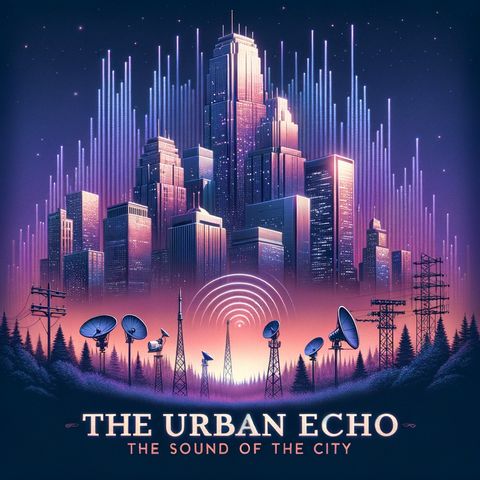The Rhythm of Resilience: Stories of Urban Survival

Scarica e ascolta ovunque
Scarica i tuoi episodi preferiti e goditi l'ascolto, ovunque tu sia! Iscriviti o accedi ora per ascoltare offline.
The Rhythm of Resilience: Stories of Urban Survival
Questa è una trascrizione generata automaticamente. Si prega di notare che non è garantita la completa accuratezza.
Descrizione
Living in the city, I'm constantly immersed in what I've come to think of as the urban echo - that distinctive acoustic fingerprint that makes every metropolis uniquely alive with...
mostra di piùIn the early morning hours, the city's voice starts as a whisper. I hear the first subway trains rumbling beneath the streets, their distant thunder mixing with the whirr of street sweepers and the clatter of delivery trucks making their morning rounds. The sounds bounce off glass and steel facades, creating an acoustic canyon that amplifies and transforms these mechanical utterances into something almost musical.
What really captures my attention is how the urban echo changes throughout the day. During rush hour, it becomes a crescendo of footsteps on concrete, thousands of conversations merging into a single murmur, and the persistent drone of traffic. Car horns create a peculiar urban percussion, their sounds reflecting off buildings and returning as ghostly afterthoughts seconds later.
I've noticed that different neighborhoods have their own distinct acoustic signatures. In the financial district, sounds are sharp and bright, bouncing off reflective surfaces and creating what acousticians call flutter echoes. Meanwhile, in older residential areas, brick and stone absorb more sound, creating a warmer, more muted atmosphere. The contrast is particularly striking during rainfall - modern glass towers create a metallic pitter-patter, while historic districts seem to soften the sound into a gentle background hush.
Street musicians add another fascinating layer to this urban composition. Their music doesn't just float through the air - it interacts with the architecture, finding unexpected resonances in subway stations and urban plazas. I've heard saxophone notes lingering in station tunnels long after the musician has stopped playing, and guitar chords seemingly amplified by the natural acoustics of building entrances.
Perhaps most intriguing is how the urban echo reveals the hidden life of the city. Late at night, when traffic dies down, you can hear sounds that are usually masked: the distant clatter of elevated trains, the hum of air conditioning units, and even the subtle creaking of buildings as they cool down. These sounds travel further in the still air, bouncing off surfaces and creating a nocturnal soundscape that's entirely different from the daytime cacophony.
The seasonal changes in the urban echo are equally fascinating. Summer brings the whirr of countless air conditioners and the chatter of outdoor diners, while winter muffles the city under snow, creating an almost eerie quiet punctuated by the crunch of footsteps and the scrape of snow shovels. Spring and fall have their own distinctive sounds - the return of birdsong and the rustle of fallen leaves respectively.
Technology has added new dimensions to the urban echo. The gentle ping of smartphone notifications has become part of the ambient sound, along with the whirr of electric vehicles and the buzz of delivery drones. These modern sounds blend with traditional urban noises in unexpected ways, creating a constantly evolving acoustic landscape.
What I find most remarkable is how we've adapted to this complex soundscape. Our brains learn to filter and process these layers of sound, creating what some researchers call an "acoustic habitat" - a personal relationship with the urban echo that helps us navigate and understand our environment. It's a relationship that changes how we perceive the city and influences everything from our stress levels to our sleep patterns.
The urban echo isn't just noise - it's the voice of the city itself, telling stories of human activity, architectural design, and technological progress. It's a constant reminder that we live in a dynamic, ever-changing environment where every sound has its place in the greater urban symphony.
For more info go to https://www.quietplease.ai
Check out these deals https://amzn.to/3zlo77e
Informazioni
| Autore | QP - Daily |
| Organizzazione | William Corbin |
| Sito | - |
| Tag |
Copyright 2024 - Spreaker Inc. an iHeartMedia Company
